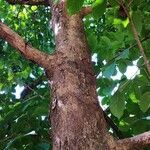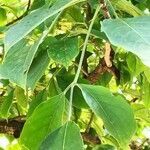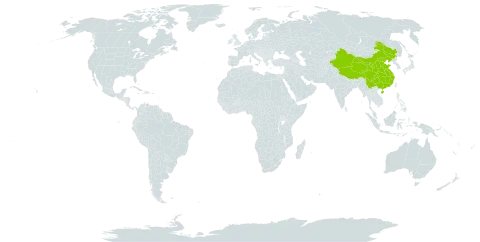Trees to 15 m tall, 50(-100) cm d.b.h., deciduous, glabrous throughout; bark brown, ca. 6 mm thick, longitudinally fissured; older branches brown, lenticels rusty; branchlets green, lenticels gray-white. Leaves palmately 3-foliolate; stipules small, caducous; petiole 9-13.5 cm; terminal petiolule 1.5-4(-6) cm, lateral petiolules 3-14 mm; terminal leaflets usually larger than bilateral ones; leaflet blades ovate or elliptic-ovate, sometimes oblong-ovate, 5-9(-14) × 3-6(-9) cm, papery, base rounded or shallowly cordate, apex acute or shortly acuminate, margins with 4 or 5 teeth per cm. Plants dioecious. Inflorescences pendent racemes, on lower parts of previous year branches, generally appearing in spring, male inflorescences 8-13 cm, female 3-12 cm. Male flowers: sepals semiorbicular, membranous, spreading; filaments short; pistillode prominent. Female flowers: sepals as in male, with white membranous margin; ovary 3-or 4-locular; styles 2 or 3, entire. Fruits globose, 5-7 mm in diam., brown-red when mature. Fl. Apr-May, fr. Oct-Nov.
More
A tree. It grows 15 m tall. The trunk is 50 cm across. It loses its leaves during the year. The leaves have 3 leaflets spread out like fingers on a hand. The end leaflet is largest ad 5-9 cm long by 3-6 cm wide. The fruit are round and 5-7 mm across. They are red-brown when mature.



